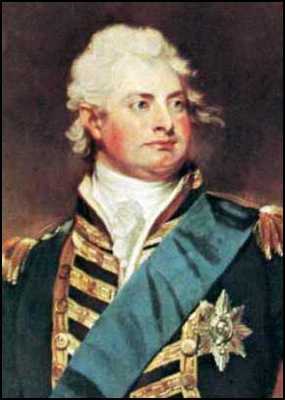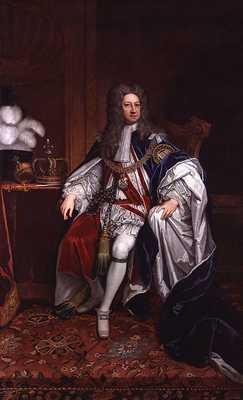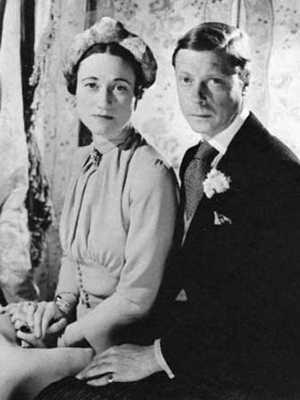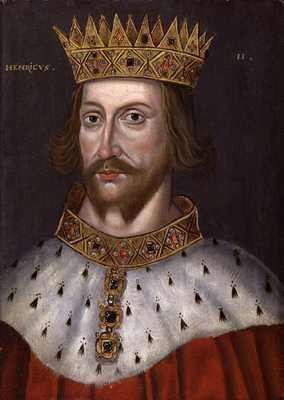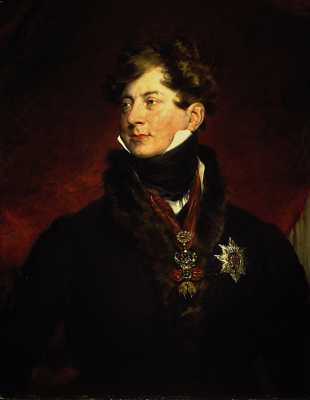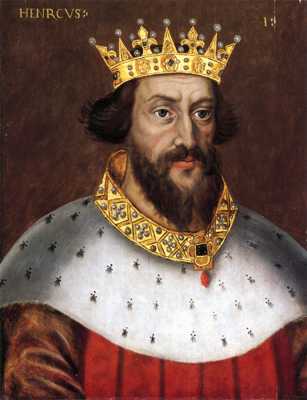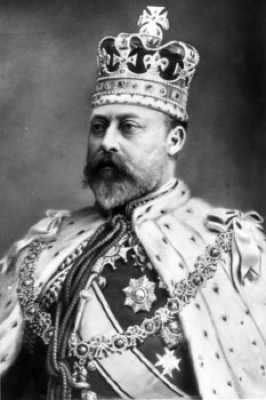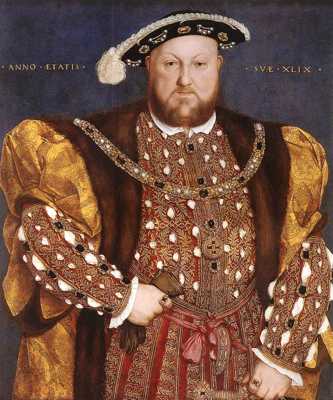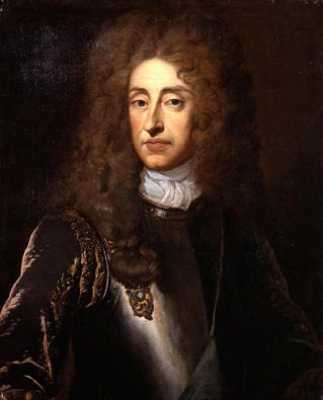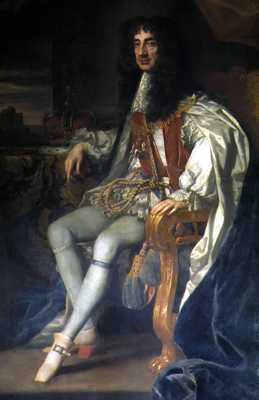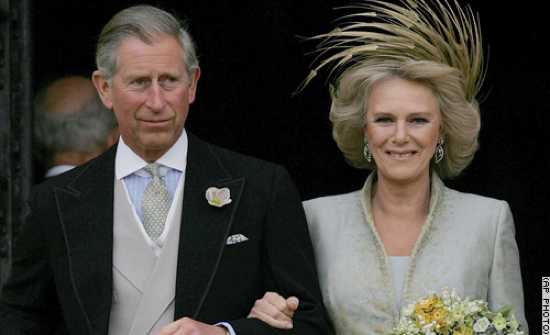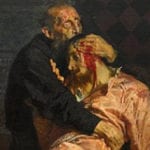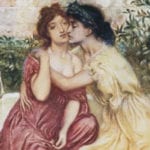William IV was king of the United Kingdom for 20 years, but while he was Duke of Clarence he lived with his mistress, an Irish actress named Dorothea Jordan . They never married as they needed permission from the king in order to have a legitimate wedding. They were said to be very much in love and together they had 10 children George FitzClarence 1st Earl of Munster (1794), Henry Edward (1795), Sophia Sidney Baroness De L’Isle and Dudley (1796), Lady Mary Fox (1798), Lieutenant General Lord Frederick FitzClarence (1799), Elizabeth Hay Countess of Erroll (1801), Rear-Admiral Lord Adolphus FitzClarence (1802), Lady Augusta Hallyburton (1803), Lord Augustus FitzClarence (1805) and Amelia Cary Viscountess Falkland (1807). The relationship ended badly in 1811, Dorothea claimed that the split was due to money problems. The surname FitzClarence come from FitzRoy, an Anglo-Norman name meaning “son of the king”. Different versions of this name were used by many royals as a surname for their illegitimate children.
George I came to Britain from Hanover in 1714, after he inherited the throne, and with him he brought his two long-established mistresses. He had divorced his wife Sophia Dorothea of Celle in 1694, and had her imprisoned in the Castle of Ahlden for the rest of her life, after a scandalous affair. Her lover, Philip Christoph von Königsmarck, disappeared one morning never to be seen again, and years later two men confessed that George had paid them to kill him and dump his body in a river. His first mistress was Ehrengard Melusine von der Schulenburg, nicknamed “The Maypole” because she was so thin. Together they had three Illegitimate children: Anna Luise Sophie von der Schulenburg Countess of Dölitz (1692), Melusina von der Schulenburg Countess of Walsingham (1693) and Margaret Gertrude von der Schulenburg, Countess of Oeynhausen (1701). After Georges death she kept a pet raven which she believed was George’s re-incarnated soul. George’s second mistress, Sophia von Kielmansegg, was nicknamed “The Elephant” due to her portly size. In European royalty inbreeding was prolific as families struggled to keep their wealth and power, however this was usually a match between cousins. Sophia was actually George’s illegitimate half-sister as they were both children of Ernest Augustus Elector of Hanover. Sophia’s family have denied she slept with George, but it was common knowledge at British court she was his mistress. Both women were George’s mistresses until his death, in 1727.
Edward VIII is said to have been quite promiscuous during his youth, and had many affairs with married women, but most of the reports of this are hearsay and very difficult to verify. He had 3 official mistresses, which puts him quite low on this list. Edward met Winifred Dudley Ward, a wealthy socialite, in 1918 at a dinner party, and for the next sixteen years Freda was Edward’s mistress. There is speculation that her son Timothy Ward Seely is actually Edwards illegitimate son, although this remains unproven. When Edward met Viscountess Thelma Furnessin in 1929, he was smitten. Like Freda she was an attractive and wealthy socialite, and along with Freda she was Edwards mistress for the next 5 years. Then, in 1934 both Freda and Thelma found themselves very suddenly replaced by an American divorcee, Wallis Simpson. Edward had meet Wallis at a party thrown by Thelma, and by 1934 she was firmly in control. In 1936, Edward was King and Wallis had divorced her second husband, however they couldn’t marry due to constitutional laws governing royal marriages. Edward was determined, though, and less than a year after becoming king he abdicated and left to live in exile so he could marry Wallis. For what its worth, they lived out the rest of their lives happily ever after.
Henry II was notorious for his illicit relations with other men’s wives, and for having several illegitimate children. However, few records containing information about them have survived, and only records about the most infamous mistresses would have been written to start with. Henry II married Eleanor of Aquitaine in 1152, the same year Henry’s first recorded illegitimate son, Geoffrey Plantagenet Archbishop of York was born, details of his mother are unclear but her name is believed to have been Ykenai. Henry fell deeply in love in 1163, when he met Rosamund Clifford: there are lots of legends surrounding Rosamund so it is difficult to pick the truth from the folklore. There is some belief that she had at least one child by Henry, what is clear though is that the affair lasted until 1176, shortly before she died. After Rosamund’s death, Henry helped pay for her burial and tomb, which most people take as a proof of his true affection for her. To strengthen their alliance, Louis VII of France sent his 8 year old daughter, Alys Countess of the Vexin (1160), to England to marry Henry’s legitimate son, and heir, Richard I of England. Richard married Berengaria of Navarre in 1191, by this time Alys was already his fathers mistress, she is also thought to have had a child by Henry. In 1175, Matilda Abbess of Barking was born, the name of her mother has unfortunately been lost to time, and less than a year after Matilda’s birth William Longespée 3rd Earl of Salisbury was born. He was Henry’s son by Ida de Toesny, Countess of Norfolk and the wife of Roger Bigod, Earl of Norfolk. Henry also had a son by Lady Nesta Bloet, the wife of Sir Ralph Bloet, and Morgan would later become the Bishop of Durham.
In 1795, George IV was married to Caroline of Brunswick in a purely politically arranged marriage which was doomed from the outset. In 1796, their only child, Princess Charlotte Augusta of Wales, was born and shortly after that they were living completely separate lives. George had been keeping mistresses since 1779, when he met Mary Robinson while she was performing in a play. He offered her twenty thousand pounds if she would become his mistress. George had tired of her within a year, and dumped her without paying her. The affair had ruined her reputation and she wasn’t able to find work, so she threatened to sell some of his love letters to a newspaper, and he agreed to pay her a small pension. Two years later, George began an affair with Grace Dalrymple Elliott, again it was a short affair which was kept quiet, but within a year Grace had a daughter, Georgina Seymour. George acknowledged the child and she was baptized as Georgina Frederica Augusta Elliott, Daughter of His Royal Highness George, Prince of Wales. There was speculation that the child was not George’s as she resembled another of her mothers lovers. Grace didn’t last much longer as a mistress, but she did manage to survive the French revolution, despite being jailed and sentenced to death by guillotine. In 1784, Lady Elizabeth Lamb Viscountess Melbourne had a son, George Lamb. At the time, she was George’s mistress but her husband took responsibility for the child. That same year George meet his longest lasting mistress, Maria Fitzherbert. He fell madly in love with her and they married in 1785. The marriage was not legally valid under the Royal Marriages Act, but George and Maria lived together through his legitimate marriage to Caroline, until 1811. During these years George did acknowledge illegitimate children with other women, and although she officially had no children, in Maria’s will she refers to her two daughters, Mary Ann Stafford-Jerningham and Mary Georgina Emma Dawson-Damer. It is possible they were her illegitimate children with George, hidden and raised by close family and friends to avoid any more scandal. Next to catch George’s eye was Frances Villiers, Countess of Jersey, and by 1794 she had managed to lure George away from Maria. For a few years she took control of the household, however her place as favorite mistress didn’t last and he had soon moved on to Lady Hertford. Isabella Anne Ingram Seymour Conway, Marchioness of Hertford, became George’s mistress in 1807, despite her husband trying to keep George away from her. Isabella was the one to first influence George towards the Tory political party, but as with most of George’s mistresses he tired of her and, in 1819, he had a new interest. Marchioness Elizabeth Conyngham was considered very beautiful, but looked down upon by her peers due to the common birth of her mother. Her husband was not very well connected, and she became a courtesan to men of wealth and power in the hope of gaining her family favor. She began her affair with George around 1819, and her plan quickly proved successful: her husband was made a Marquess and a member of the Privy Council. The affair continued right up until Georges sudden death, in 1830, after which Elizabeth moved to Paris and refused all of the jewelry and gifts George had left her in his will.
Henry I has the distinction of having the most recognized illegitimate children of any English king, with more than 20 to his name. A lot of the documents have been destroyed in the centuries since Henry lived, which, when combined with the low literacy levels during this era, makes it not surprising that details have been lost. The main issue, though, is that women where not considered important enough to be written about, and most of the information on these women comes from what was written about their husbands or children. We do know Robert, 1st Earl of Gloucester (1090), is probably Henry’s first illegitimate child, and his mother was most likely one of Rainald Gay’s daughters. Henry next illegitimate son was Gilbert FitzRoy, and we know he died sometime after 1142 and that his mother may have been one of Walter de Gand’s sisters. With a mistress, known only as Edith, Henry had a daughter, Matilda du Perche, in 1086. Matilda married Count Rotrou III of Perche, and died in the shipwreck of the White Ship in 1120. Henrys next son, Henry Fitzroy (1103), was the child of Princess Nest Ferch Rhys (1073). She was later married off to Gerald de Windsor. Nest is said to have been remarkably beautiful, and was even kidnapped by her cousin, Owain, after he fell in love with her. With Ansfride of Seacourt (1070) Henry had three children, Juliane de Fontevrault (1090), Fulk FitzRoy (1092) and Richard of Lincoln (1094). Juliane de Fontevrault once tried to kill her father with a crossbow. Henry kidnapped a rebellious nobles son, so the noble kidnapped Henrys granddaughters (Juliane’s daughters). They tried to negotiate peace and agreed to call it a truce and swap hostages. Henry wanted to humiliate the noble so he blinded his son before returning him, and in retaliation the noble mutilated his young granddaughters by blinding them and cutting their nose’s off. With Edith FitzForne he fathered two children, Robert FitzEdith Lord Okehampton (1093) and Adeliza FitzEdith. Henry also fathered a son in 1087, William de Tracy, with Gieva de Tracy (1064). Lady Sybilla Corbet of Alcester (1077) was married but, as with many others on this list, that didn’t stop Henry. Together they had at least 2 children, Sybilla de Normandy and Reginald de Dunstanville, 1st Earl of Cornwall. Three of Henrys other children may have also been Sybilla’s, William Constable (1105), Gundred of England (1114) and Rohese of England (1114). Isabel de Beaumont (1102) was the wife of the 1st Earl of Pembroke. With Henry she had two children, Isabel Hedwig of England and Matilda FitzRoy, Abbess of Montvilliers. Henry has other illegitimate children who can’t be definitively connected to any one mistress. Henry was a clever man, and used his illegitimate children to secure his position. He made his sons nobles and gave them land, and he married his daughters off to men he wanted to keep as allies. Some of his illegitimate children include Maud FitzRoy (1901), wife to Conan III Duke of Brittany, Constance FitzRoy (1110) married to Richard Viscount de Beaumont, Mabel FitzRoy was married to William III Gouet, Aline FitzRoy wife of Matthieu I of Montmorency, Elizabeth of England married Fergus of Galloway and Emma married Guy de Laval IV.
Edward VII was notorious for his infidelities, he managed to carry out each affair in a discreet manner, and as such no one is entirely sure how many mistresses he had. There is some speculation that it could have been up to 55, though there is no clear evidence of how far each relationship went. His wife, Queen Alexandra, whom he married in 1862, is believed to have been aware of many of his affairs and, for the most part, to have accepted them. It was normal during the Victorian era for married woman of good standing to become mistress to men of higher social standing, with her husband’s knowledge, to advance the couple socially or politically. In 1864, after her husbands death, Lady Susan Pelham-Clinton began a short affair with Edward. Allegedly, Susan had Edwards’s illegitimate child in 1871, and a letter written to Edward by one of Susan’s friends states that “the crisis was due within two or three months” nothing further is known about this child, though. Lillie Langtry was a renowned beauty known as Jersey Lily, and in 1877 Edward arranged to sit next to Lillie at a dinner party. She soon became his mistress and a friend of Queen Alexandra. It was a short affair and cooled off after the arrival of Sarah Bernhardt. Sarah was a stage and film actress who had already had a son by Belgian Prince Charles-Joseph Eugène Henri Georges Lamoral de Ligne. She would often sleep in a coffin, as she claimed this helped her understand tragic roles. From 1879, she was Edwards mistress, and like most of his affairs, this was brief and kept as secret as possible. The next woman to be kept by Edward was Lady Jeanette Churchill, mother of English Prime Minister Winston Churchill. She was considered to be very beautiful and was married to Lord Randolph Churchill. It was after the birth of her sons that the affair began. Lady Churchill and Queen Alexandra became friends, despite the affair, and enjoyed spending time in each others company. After Lady Churchill was Hortense Schneider, a French soprano and a star of the operetta. It was through the operetta that Hortense met Edward, little is know of this affair as Edward was discreet but Hortense earned herself the nickname “Le Passage des Princes”. Daisy Greville Countess of Warwick, an illegitimate descendant of King Charles II, was a courtesan to Edward. She was also having an affair with Lord Charles Beresford. Her letters from the time show that she genuinely cared for Lord Beresford, and when Edward discovered this affair he was enraged and the dispute had to be resolved by the Prime minister. In 1869, Sir Charles Mordaunt 10th Baronet, threatened to name Edward as co-respondent in his divorce from Harriet Sarah Moncreiffe. Edward was called as a witness in the case as Edward had visited the Mordaunts house while Sir Charles was away. Edward denied the rumors of adultery, and nothing could be proven, but this was damaging to his reputation. From 1899, up until his death in 1910, Agnes Keyser was Edwards mistress, making her one of Edwards longest mistresses. Together with her sister, Fanny, she converted their home into a hospital for officers returning from the Boer War. Edward was the hospitals first patron and, although it has moved location, it is still running today as King Edward VII’s Hospital for Officers. As well as Agnes, Edward also kept Alice Keppel, a society lady married to the son of the 7th Earl of Albemarle. She was a popular mistress to men of power due to her discretion, and took many lovers to help increase her standing in society, all with her husband’s knowledge. In 1898, she began an affair with Edward, despite being nearly 30 years his junior, which lasted right up till the monarch’s death. Alice was the great-grandmother of Camilla, Duchess of Cornwall. Edward would also frequent Le Chabanais, one of the most luxurious brothels in Paris. There he had his own room with his coat of arms above the bed, a special bath tub in which he could bathe in champagne with the prostitutes, and even a special chair designed and made for his visits. It was here that he encountered Giulia Barucci, an employee of Le Chabanais, who became another of his mistresses. Edward is also said to have enjoyed the company of Cora Pearl and Caroline “La Belle” Otero during his numerous visits to the brothel.
Henry VIII’s libido is legendary, so you might be surprised to find he is only number 3 on my top 10. On 11 June, 1509, he was married to his first wife Catherine of Aragon, the young widow of his older brother King Arthur. Catherine was pregnant at least 5 times, with only Mary I surviving infancy. Henry’s first mistress was Anne Stafford Countess of Huntingdon in 1510, a year after he married Queen Catherine. When discovered, this affair caused a scandal and resulted in Anne being sent to a convent by her husband. Jane Popincourt was his second mistress, in 1514, she was his sister’s tutor, and was rumoured to be so promiscuous that even the French king wouldn’t allow her into his court. Next was Elizabeth Blount: this affair was less discreet and the attention he gave her even upset Catherine, Henry’s wife. Elizabeth gave birth in the spring of 1519: the boy was the first son of the king and named Henry FitzRoy. Elizabeth was married off to the 1st Baron Tailboys of Kyme, who was one of Henry’s courtiers and Member of Parliament. It was around this time Henry had at least 3 other illegitimate children, Thomas Stukley in 1520 by Jane Stukley, Etheldreda Malte in 1527 by Joan Dingley and John Perrot in 1528 by Mary Perrot. The King’s next official mistress Mary Boleyn, was known as a courtesan: King Francis I of France described her as “a great prostitute, infamous above all.” Mary was married to Sir William Carey who was compliant due to the status and favor it afforded him. Both of Mary’s children, Catherine (1524) and Henry Carey 1st Baron Hunsdon (1526), were Henry’s illegitimate offspring. Henry soon tired of his mistress and Mary was sent to live with her husband in the country. Henry’s next mistress was Mary’s younger sister, Anne. Henry had started proceedings for his divorce from Catherine of Aragon as she was now barren and couldn’t give him a male heir. Henry desperately wanted a legitimate son to provide stability for the country and avoid another civil war. Anne refused to sleep with Henry unless he married her, so, six years later on 25 January, 1533, that’s what Henry did. As the pope wouldn’t grant him a divorce, Henry declared himself the head of the church in England, and split from Catholicism starting hundreds of years of religious wars. Henry and Anne went on to have a daughter who would become Queen Elizabeth. Anne was pregnant at least 4 more times but these resulted in miscarriages or still births. While Anne was pregnant Henry took other mistresses, including Mary Shelton, who was Anne’s cousin, and Jane Seymour. After Anne’s final miscarriage, Henry had her executed on unfounded charges of treason and incest. Henry went on to marry Jane Seymour, who provided him with the son he desired, however she died shortly after childbirth. She was the only one of Henry’s 6 wives to receive a queen’s funeral, and she is buried next to him in St Georges Chapel at Windsor castle. As far as records show, he didn’t have another official mistress after this. However, he did go on to marry Anne of Cleves, Catherine Howard and Catherine Parr.
James II was a prolific philanderer, even rivaling his brother Charles II, with most reports putting the number at around eleven official mistresses. James had unusual tastes in women: while other men of his time followed the baroque model of heavy-set, voluptuous women, James was attracted to young slim teens. In 1659, James seduced Anne Hyde who was Maid of Honor to his sister, Princess Mary, while they were living in exile in Europe after the English civil war. Charles II forced James to marry Anne, despite her unattractiveness, after she was found to be pregnant by James. So his first mistress became his wife. Anne and James went on to have 8 children, 6 of whom died in infancy, with only two surviving: Mary, 1662 and Anne, 1665. James’s longest-lasting mistress was Arabella Churchill, an ancestor of British Prime Minister Winston Churchill. Their affair began in 1665, when she was 17, around the time that Arabella became Queen Anne’s lady-in-waiting. Arabella and James had four illegitimate children together, Henrietta 1667, James 1st Duke of Berwick 1670, Henry 1st Duke of Albemarle 1673 and Arabella FitzJames 1674, and after the birth of their final child Arabella was married off, as well. Queen Anne died in 1671, probably of breast cancer, 7 weeks after the birth of her youngest child, Catherine, who died at 10 months old. Catherine Sedley, Countess of Dorchester, was the mistress of King James II before he came to the throne. Following pressure from the church and catholic officials, after he was crowned James “retired” Catherine. He moved her out of Whitehall but he doubled her allowance as compensation, within the year James had changed his mind and they were meeting again. Their son James Darnley was born in 1684, he sadly died the next year, she also bore James a daughter, Lady Catherine Darnley, her birth was around 1681 and she married the 3rd Earl of Anglesey. In 1686, Catherine was awarded Countess of Dorchester for life, though this caused much anger at court and as a result Catherine went to stay in Ireland while the scandal blew over. Most of James’s other liaisons were short-lived affairs with women he met at court. Lady Anne Carnegie, Countess of Southesk, was the wife of the 3rd Earl of Southesk and the daughter of Daughter of William Duke of Hamilton, and also one of James’s many mistresses. During 1662, Elizabeth Stanhope, Countess of Chesterfield, was said to have been caught “in flagrante” with James. This lead to some speculation as to whom the father of her daughter Lady Elizabeth Stanhope, born 1663, was. After Lady Chesterfield was Mary “Moll” Kirke, daughter of George Kirke and later Lady Vernon, wife of the 2nd Baron of Hodnet. She was another of the Queens maids of honor and another of James’s mistresses. Following his first wife’s death, James proposed to his mistress, the 17-year-old widow Lady Susanna Baroness of Belasyse, daughter of the 2nd Baron of Airmine. James was forced to choose a more suitable wife, but Susanna was given a life peerage and made a baroness. James was also known to have had an affair with Goditha Price, daughter of the 1st Baronet of the Priory. James’ next interest was Lady Elizabeth Denham, wife of the poet Sir John Denham. Followed by a very short lived affair with Lady Jane Middleton. James was only king from 1685, when his brother died without a legitimate heir, to 1688 when his daughter Mary and her husband William led a revolution and overthrew him.
Charles II may be the most notorious womanizer of the English Kings, with reason. He often had multiple mistresses, both noble and common. Charles had fourteen acknowledged illegitimate children, but no legitimate heir with his wife Catherine. His first recorded mistress was Lucy Walter, a well known courtesan, their affair began in the mid 1640’s and by 1649 Lucy gave birth to James Scott 1st Duke of Monmouth, the eldest of Charles illegitimate children. After Charles’s death, James would try to succeed him by claiming his parents had married in secret, he had no evidence to support this and his rebellion failed. From 1648 to 1660, Charles was living in exile after the English revolution, and during this time he and Elizabeth Killigrew Viscountess Shannon, a maid-of-honor to his mother, had a very brief affair, and in 1650 she had his daughter, Charlotte Jemima Henrietta Maria FitzRoy. While exiled, Charles also began an affair with Catherine Pegge and, in 1657, she gave birth to Charles FitzCharles 1st Earl of Plymouth, followed by a daughter Catherine FitzCharles. Catherine’s position did not last long, and in 1667 she was married off to Sir Edward Greene. Next to catch Charles’s eye was Barbara Palmer, 1st Duchess of Cleveland, a renowned courtesan of her day. They began their affair in 1660, and she quickly gained a reputation for her greed, extravagance and foul temper. Barbara and Charles had 5 children together between 1661 and 1665, Anne Countess of Sussex, Charles 2nd Duke of Cleveland, Henry 1st Duke of Grafton, Charlotte Countess of Lichfield and George 1st Duke of Northumberland. Through her son Henry, Barbara is an ancestor of the late Princess Diana. Winifred Wells was a Maid of Honor to Queen Catherine and, from 1662, she was also Charles mistress, though she never gained much favor or power. Samuel Pepys wrote in 1662 that Winifred “dropped a child during a court ball held on 31 December” this child was allegedly the kings, but never officially recognised. In 1673, after Charles lost interest, she was married to Thomas Wyndham. Frances Stewart was a maid of honor at Charles and Catherine’s wedding in 1663, and then a lady-in-waiting. Legend has it that Frances refused to sleep with the king unless he married her, however there is strong evidence that Frances and Charles had a daughter, Rebecca Stuart, but she was kept secret to protect Frances’s reputation. Frances realised that the only thing she would ever be to Charles was a mistress, so she eloped with the Duke of Richmond, leaving Charles heart broken. Mary Davis was an actress and courtesan who began her affair with Charles in 1667, in 1669 she gave birth to Charles’ daughter Lady Mary Tudor. Shortly after this, Charles lost interest in Mary, possibly due to his new mistress, and Mary’s main rival for the last year, Nell Gwyn. Born to a poor family, Nell started working as an actress at age 14. After gaining some fame she went on to become a mistress and started her affair with Charles in 1668. Nell and Charles had two sons, Charles in 1670 and James in 1671, they stayed friends until Charles death in 1685. After Nell came Louise Renée de Penancoët de Kérouaille Duchess of Portsmouth, she was born into aristocracy and was placed into Henrietta Stuart’s household in the hopes she would attract the attention of royalty. Around 1670, she attracted Charles and in 1672 their child, Charles Lennox 1st Duke of Richmond, was born. Louise influenced Charles in favor of France in matters of state, this earned her the hatred of the English. Sarah, Duchess of York, Camilla, Duchess of Cornwall and Princess Diana are all descendants of Louise and Charles. Hortense Mancini, Duchess of Mazarin, escaped a failed marriage and spent many years in Europe as a courtesan to men of nobility who could afford to keep her. By 1676, she had succeeded in replacing Louise as Charles’s favored mistress. Hortense quickly fell from favor, she was in a lesbian relationship with Anne Fitzroy, Charles daughter with Barbara Palmer. This ended when Anne’s husband sent her to the country after Hortense and Anne had a public fencing match in St James Park wearing only nightgowns. She was also having an affair with Louis I Prince of Monaco, and when Charles found out he cut off her allowance. Although he gave in after a few days, this was the beginning of the end of Hortense’s position. She and Charles remained friends, and Barbara Palmer became favorite once again. Little information is known of his other mistresses: they included Jane Roberts who was the daughter of a clergyman, Mrs Knight a famous singer, Elizabeth Berkeley Dowager Countess of Falmouth and Christabella Wyndham, the royal nurse who had once been Charles’s wet nurse. There are also many other unofficial reports of mistresses including Countess Elizabeth Fitzgerald, the second wife of the 18th earl of Kildare and Lady Mary Sackville of Dorset. Interestingly, it is alleged that Charles fathered James de la Cloche in 1646 by Lady Marguerite de Carteret. Reportedly, Charles II recognized him in secret in 1665, and granted him £500 a year, as long as he would stay in London and as an Anglican, however this remains unproven.
Charles misses out on a spot in my list as he is the current Prince of Wales and heir to the throne, and only Monarchs are allowed on the list, but he deserves a special mention for his stupidity. Charles married Diana Spencer in 1981, as far as we can tell Charles was not in love with Diana but he had decided she would make a proper royal bride and was suitable for the job. Diana was extremely popular with the public and earned the nickname “the Queen of Hearts”. Within a few years, the marriage was on the rocks and they divorced in 1996, in no small part due to Camilla. Camilla Parker Bowles was one of Charles’s early girlfriends and a descendant of Edward VII and Alice Keppel. They were romantically involved on and off from the 1970’s, however Charles believed she was not a suitable royal bride. Allegedly, they began an affair in the 1980’s and this was the main cause of strain on his and Diana’s relationship. This created very bad publicity for Charles, and Camilla was resented by the public. Even after the divorce Charles couldn’t marry Camilla because of public opposition. After nearly ten years, they received permission to marry from the Queen, however she didn’t attend her son’s wedding. Why he didn’t just marry Camilla in the first place is a mystery.
